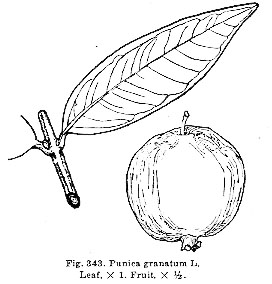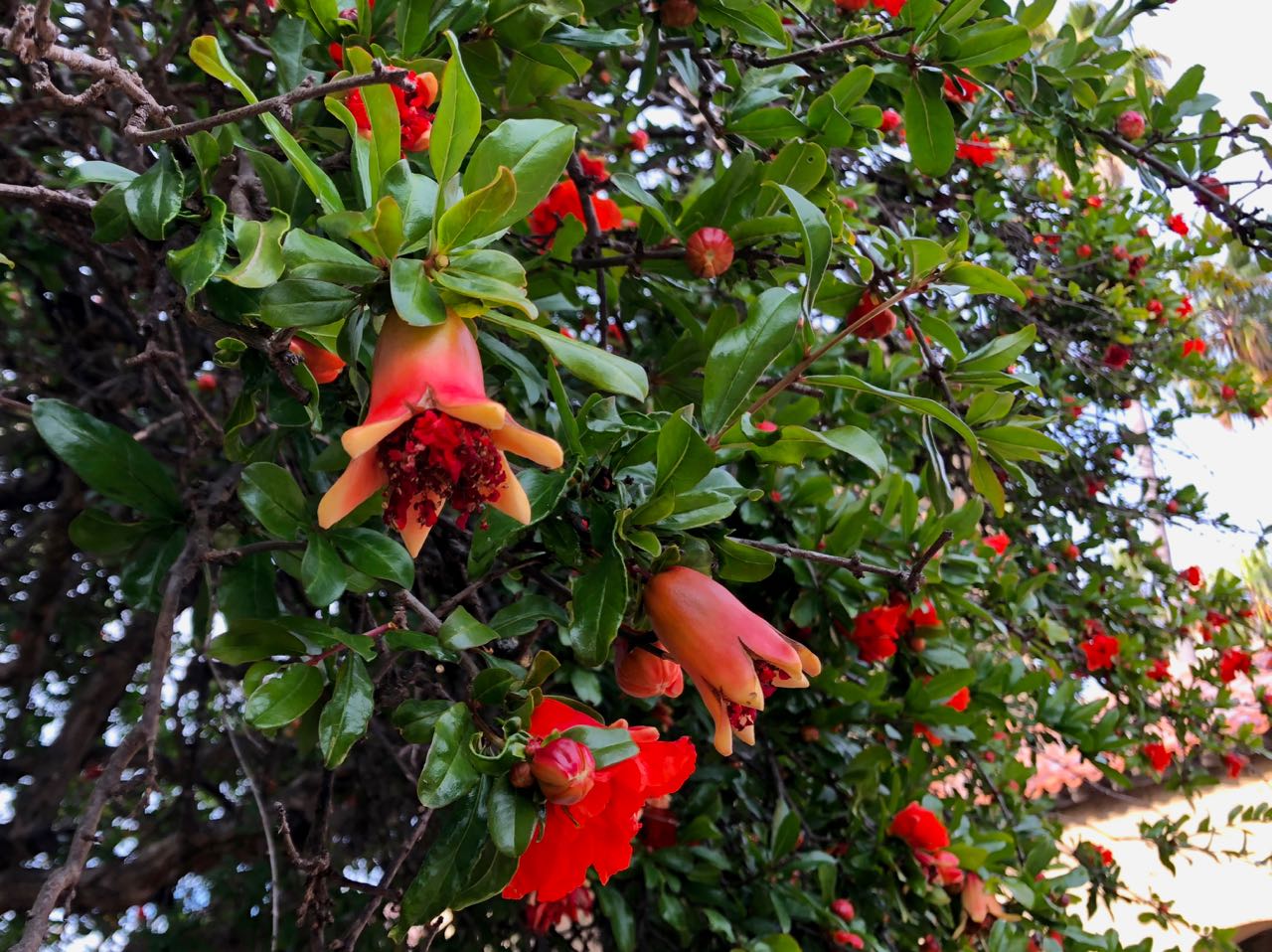Punica granatum
 pomegranate
pomegranate

A small deciduous tree, the pomegranate, or many-seeded apple, brings a cheerful touch of green in spring, later is spangled with scarlet flowers 2 inches across, and in winter, after the pleasantly yellow leaves have fallen, displays its bright red, leathery, apple-sized fruits, which can be kept for decoration. Juicy pulp capsules reminiscent of a salmon egg enclose the soft seeds. Alas, the fruit is often picked while too sour to eat but many try, as the broken pieces lying around will attest.
Ancient, twisted specimens endure in the two outer east islands of the Inner Quad. A large, old one grows behind The Knoll; newer specimens have been planted on Buckeye Lane at Jack McDonald Hall. Dwarf varieties have been popular in the past couple of decades, for example in the Littlefield Center courtyard.
The pomegranate is a delectable ancient fruit mentioned by Homer and by other Greek authors; it was sung of by Solomon, who was partial to pomegranate wine, and who refers to pomegranates several times in the same breath as wine and nuts. They evidently appealed to him, seeing that he had hundreds of graven pomegranates adorning the pillars of his own house. In Persia, Darius ate pomegranates, says Herodotus. Centuries later silver shekels bearing a pomegranate were minted in Jerusalem. Clearly the pomegranate was much more valued than it is in our times, when the whole world benefits from the voyages of the great navigators.
The fruits were referred to by the Roman author Columella as mala Punica because they came to Rome from Carthage, or so it was thought. In any case that is why Linnaeus chose the name Punica. Richard Burton, translator of the scandalous Arabian Nights, the first literate infidel to make the pilgrimage to Mecca, found there the biggest and most fragrant of all; but since then, those of Kabul have received the most praise. Crusaders brought them back to England. Grenadine, the syrup colored and flavored with squeezed pomegranate seeds, and grenade are from the same Latin root. Perhaps children used overripe fruit for throwing. Pomegranates were already growing in California by the mid-18th century.
Pomegranate was once prescribed for eliminating intestinal worms but had other powerful and mysterious properties. When Hades carried off Kore, the daughter of Demeter, she took a pomegranate with her to nibble on. Regrettably, after she was rescued, she was obliged to return each year to the nether world where she had partaken.
Illustrations: pomegranate gallery.
Name derivation: Punica – Carthage (see above); granatum – many seeded.
About this Entry: The main text of this entry is from the book Trees of Stanford and Environs, by Ronald Bracewell, published 2005. Family name updated from Punicaceae to Lythraceae (Apr 2017, SP). Removed mention of removed locations: west side of Building 300, outer NW island of Inner Quad, Old Union courtyard; added: McDonald Hall, Knoll (Feb 2024, SP).




